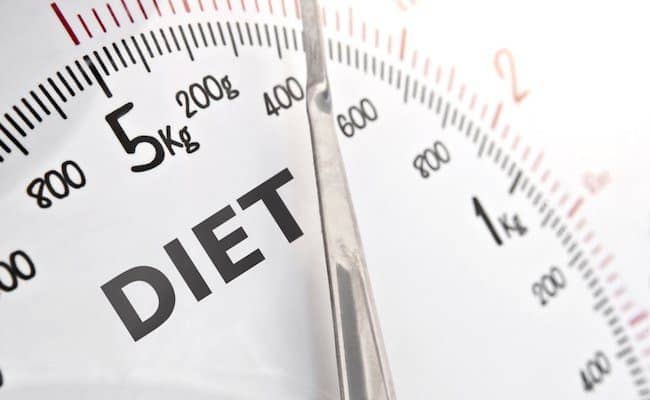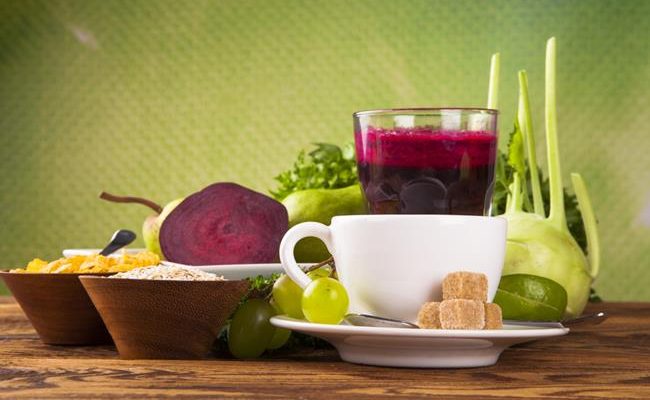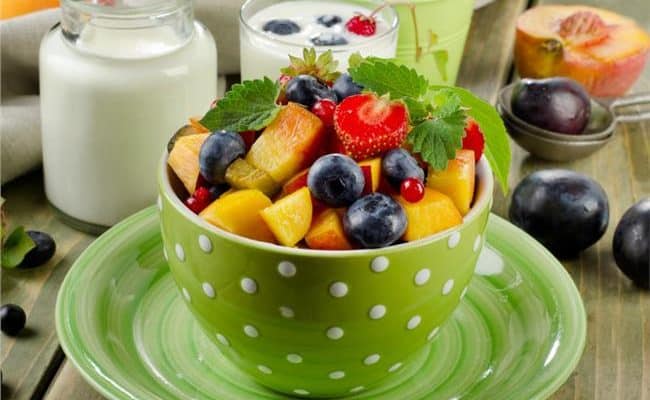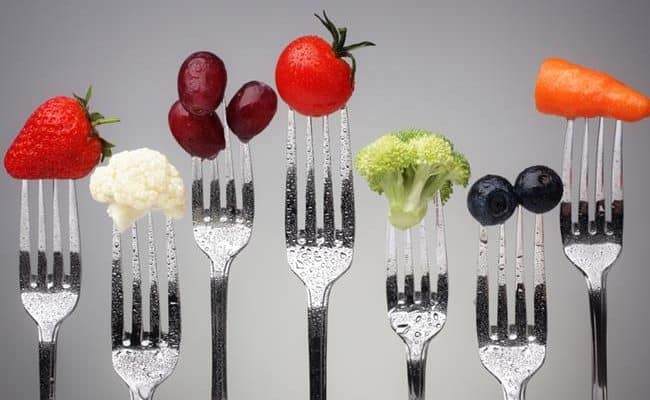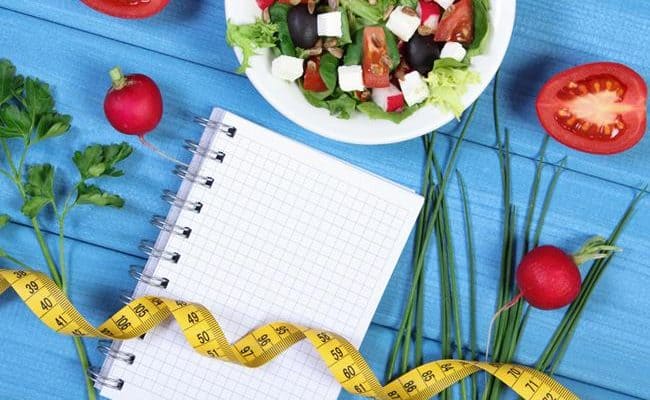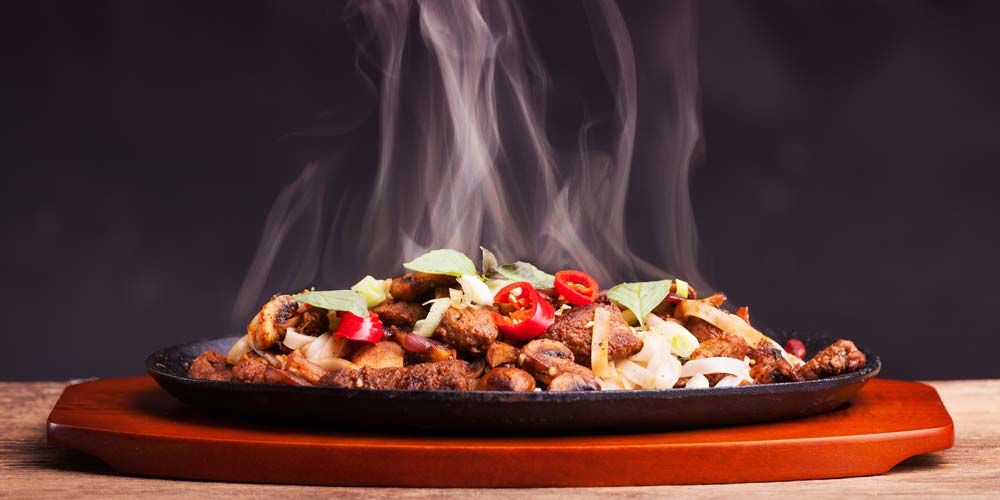
Temperature and cooking can impact nutritional information to some degree, but it won’t drastically change the calorie content of a food.
Cooking makes food easier to chew, increases digestibility and can contribute to energy value of food. Take for instance uncooked rice or any other grain. If you were to chew it uncooked, many of the nutrients are not available because the breakdown of these uncooked foods is not efficient. However, when they are cooked, the body can absorb the energy and other nutrients.
Some vitamins may be lower after cooking, and cooking loss for nutrients can depend on the cooking method.
For example, boiling vegetables may lower the amount of water soluble vitamin C and B vitamins.
However, the energy content compared to warm and cold food remains relatively the same. There may be slight differences in energy depending on the cooking method, but they are minimal.
What may also change with cooking is how fast the body can break down nutrients.
For example, a raw potato, baked potato, mashed potato and potato chips can all have a different rate of being broke down in the digestive tract.
In general, the more something is processed, the easier the body can break it down.
This may influence blood sugar levels for foods that are primarily carbohydrate like a potato. If other ingredients are added during the cooking process, this can also change the calorie amount.
Because of this, cooked foods are often associated as being higher in calories because other ingredients are usually added.
How cooking can impact calorie content
Simply steaming or microwaving a cup of broccoli will have minimal impact on the calorie content compared to a bowl of raw broccoli.
However, your body may have to work a little harder to break down the raw broccoli compared to the cooked broccoli. Some of the vitamin or minerals may be lower or higher in cooked or raw.
If you sauté or roast the broccoli with some olive oil or other fat, this of course will increase the calorie amount.
Nutrient differences in cooked vs raw food
Cooking foods can lower the vitamin C content because heat increases vitamin C loss. However, a 2009 study found steaming was the only cooking method that did not significantly lower vitamin C content in broccoli (1).
Microwaving, steaming and stir frying also kept the total amount of carotenoids after cooking. In fact, a 2012 study (2) found sautéing carrots actually increased the absorption of beta carotene compared to raw carrots.
So, while some cooking methods may lower the vitamin C content in foods, some cooking methods may actually increase the absorption of beta carotene which is an antioxidant.
One reason sautéing may be associated with a higher absorption of beta carotene is because vitamins A (beta carotene), D, E and K are fat soluble.
Therefore, eating foods that provide these nutrients with a natural fat source may increase bioavailability.
Generally, steaming is the best cooking method for preserving water soluble and heat sensitive nutrients.
Boiling vegetables, for example, leaches nutrients into the cooking liquid. Since steaming requires a small amount of liquid, it retains more of water and soluble nutrients. Steaming also has a relatively short cooking time.
Cooling cooked starches
When you cook grains, the chemical structure is changed so the food can be digestible for humans. After grains are cooked and then cooled, the chemical structure can change again.
Cooling cooked starches like potatoes, pasta or rice can cause something called starch retrogradation.
This process increases the amount of resistant starch. Resistant starch literally “resists” digestion and foods that have resistant starch release glucose slowly into the blood stream which lowers glycemic response.
When a food goes through starch retrgradation after cooking and cooling, the resistant starch content actually increases compared to when the food is just cooked.
A 2015 study (3) analyzed the difference in resistant starch in rice that was just cooked, rice cooked and cooled for 10 hours at room temperature and rice cooked and cooled for 24 hours refrigerated then reheated.
Researchers found the resistant starch content was significantly different between the three rice. The rice that was cooked, cooled in the refrigerator then cooked again had the highest levels of resistant starch.
Therefore, this suggests eating cooked and cooled starchy foods may have a different glycemic impact on your body than eating starchy food that has just been cooked.
Should you drink cold water for higher calorie burn?
What about calorie differences between cold and warm beverages? Some people think drinking cold water, for example, compared to room temperature water can have a higher calorie burn.
According to University of Arkansas for Medical Sciences (4) drinking a glass of ice water compared to room temperature water doesn’t increase calorie burn significantly.
In fact, it may only increase calorie burn by just a few calories. Therefore, drinking ice water alone in place of room temperature won’t cause a significant shift in calorie burn throughout the day.
What warm or cool foods are you eating?
Temperature and cooking can impact nutritional information to some degree, but it won’t drastically change the calorie content of a food.
Cooking and temperature variation may also impact the glycemic response especially if it is a high carbohydrate food like pasta, potatoes or rice.
However, in general, temperature alone is not a big factor for influencing calorie content of food. Also, cooked foods tend to be better absorbed, as cooking can increase digestibility.
Warm foods tend to have other foods added during the cooking process like added butter or oil. Adding these ingredients can drive up the calorie content.
However, a benefit with cooking with some fat is it can increase absorption of fat soluble nutrients compared to eating them raw.
Cooking fruits and vegetables may lower or raise certain antioxidants and vitamins. To ensure adequate intakes of all nutrients, aim to eat a variety of cooked and raw produce.
